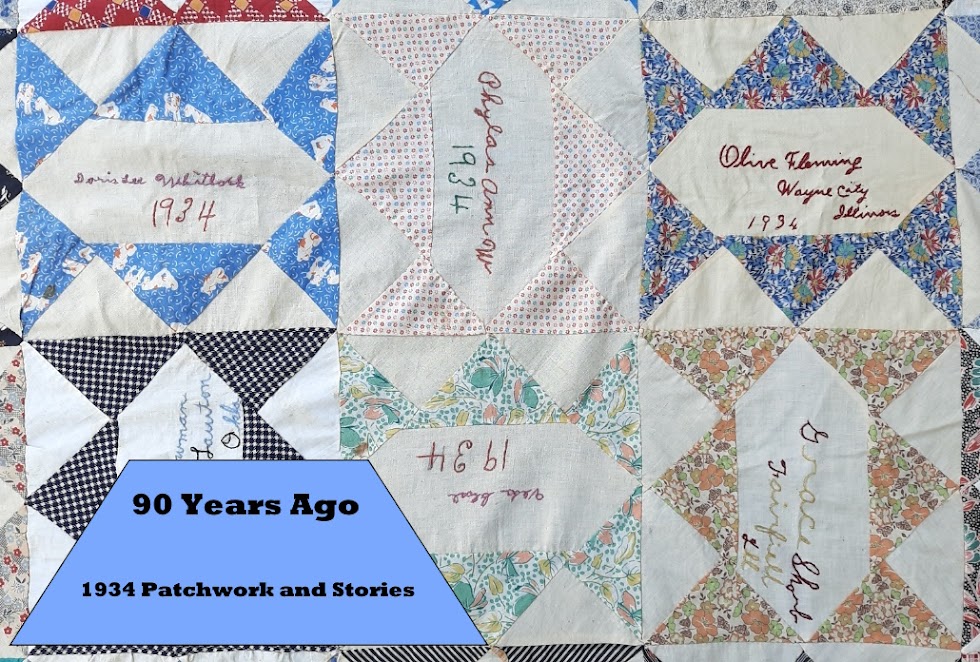 |
The quilt block Prairie Queen was posted by Nancy Cabot in 1934.
Every one interested in quilts recognizes the simple but widely used nine patch designs. "Prairie Queen" was made in 1850 by one of the hardy pioneer women. What inspired the title can only be conjectured, but the attractiveness of the block compliments the inspiration.
Chicago Tribune March 26, 1934
The pattern looks complicated but it is just a nine patch design, with four half square triangles, four 4-patches and one plain square. When Ruby McKim published Prairie Queen two months later as part of the States Patchwork Quilt Parade series, the 4-patch blocks took a bit of a twist.
A Quilt for Nebraska - Prairie Queen
Here is another fascinating patchwork that traveled west with other family treasures of a bye-gone generation.
Prairie Queen is really just another nine-patch, the four corner squares pieced of two triangles with intermediate squares of four patches and a plain center. The small sketch in the upper right corner is a set suggestion, four-inch light bands horizontally between blocks, four-inch bands vertically with pieced blocks at all intersections giving the mitered effect.
Then the odd shape piece, folded at the center is a sheaf of wheat applique copied from a very old quilt. Spaced several inches apart at the outer edge of a six-inch border, they would add much to the patchwork center.
Four blocks with five strips wide, by five blocks and six set strips long would be 68 by 84 inches, and six-inch borders would bring this up to 80 by 96. Five and one-half yards of white and 4 1/2 of gold would make this interesting quilt.
Fort Worth Star Telegram May 11 1934









